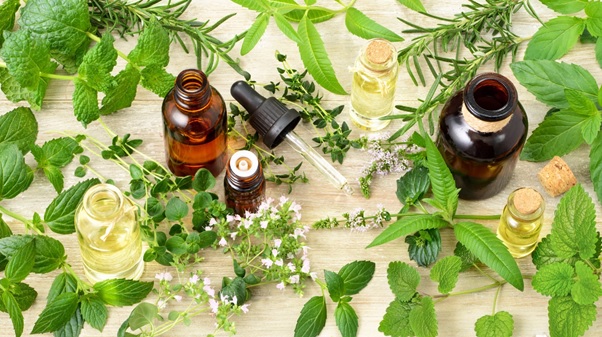It is easy to think that essential oils and fragrance oils are the same thing, as some people tend to incorrectly use these terms interchangeably. Plus, they both smell pleasant and come in similarly packaged bottles with similar names.
However, although both these oils can sometimes be used for the same purposes, they are different in many ways.
Essential oils
Essential oils are natural substances found in different parts of a plant, such as the flower, fruit, leaf or root. These oils are extracted through the process of steam distillation or solvent extraction. Pure essential oils can have both positive and negative effects, so it is important to read the descriptions before use. For example, cinnamon essential oil has good antiseptic properties, but it can irritate the skin. Another interesting fact is that not everything in nature produces essential oils, like strawberry or vanilla.
Essential oils are hard to reproduce synthetically as they can be made up of between 50 to 500 different naturally occurring chemicals. The chemical components of essential oils can also vary, due to seasons, climates or growing conditions of the plants. This means the essential oil aroma may differ slightly between batches, and may not always be consistent.
Fragrance oils
Fragrance oils are artificially manufactured with a mix of aroma chemicals and natural ingredients. Some fragrance oils may contain some essential oils, but these should still not be categorised as completely natural products. Because fragrance oils are manufactured, they are not limited to natural sources that produce essential oils. This means more scents can be made, and they can mimic almost any aroma, from cherry blossom to rainforest and more.
As fragrance oils are synthetically made, they are not as volatile as essential oils, and their aroma are more consistent. They also tend to last longer than essential oils.
Health benefits
Essential oils are well known for their medicinal and health purposes, with many of them used for their antibacterial, antiviral and antiseptic properties, such as tea tree, eucalyptus and citronella. Some essential oils are also effective in stimulating (lemon), detoxifying (ginger) and calming (lavender).
While fragrance oils do not have the same health benefits as essential oils, they are designed to mimic scents, even those that are outside the range of essential oils. Also, because fragrance oils are either partly or fully synthetic, they tend to be more stable than essential oils.
What are they used for?
Due to their many health benefits, essential oils are often used in aromatherapy to improve physical, emotional and mental health. They can help ease muscle pain, stress and tension; relieve a common cold and migraine; and strengthen the immune system. Essential oils can also be found in skin and hair care as well as household products.
Fragrance oils work very well in candles, as they hold a better scent in hot temperatures. Due to their longer shelf lives and consistency in aroma, fragrance oils are normally preferred over essential oils for use in cosmetic and skin care products, as well as perfumes.
Price differences
Essential oils vary in price depending on the type of oil, the season, and the availability. Rose essential oils are among the more expensive essential oils, due to the precise, complex and timely extraction process needed to extract the oils. In comparison, citrus essential oils are usually less expensive as it is much easier to extract.
Fragrance oils, on the other hand, are always much cheaper than essential oils, as there is no need for extraction and it is relatively easy to manufacture these oils. They are also more accessible as they usually function as one of the ingredients needed to create another product.
So which oil should you go for? It all depends on the usage purpose as well as personal preference, and we hope this article will help you make your choice. In the meantime, feel free to take a look at our wide range of pure essential oils and fragrance oils!














